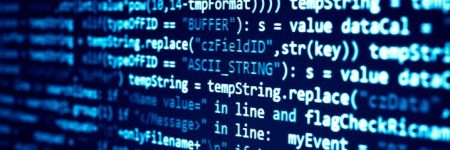Throughout history, human beings have been presented with various challenges that explain nature or its nature. The why of things, night and day, why plants grow, or the distance to the Moon or other celestial bodies.
In previous seasons, the type of enigma that has been presented has been to translate impossible historical signs or writings referring to already extinct cultures and for which we only had a sample of signs in clay or stone with difficult extrapolation.
The translation of these signs has been a great milestone in history and perhaps the most representative because of its impact and, a bit also, because of the romantic halo that surrounds a fascinating and extinct culture like the classical Egyptian culture of the pharaohs.
Only the Rosetta Stone found in the French expedition promoted by Napoleon (a great statesman and soldier, as well as an egotistical invader of Europe, in equal parts) and completely translated by Jean-François Champollion (after initial work by Thomas Young), allowed knowing the true meaning of a hieroglyphic and symbolic language.
Sometimes, knowing the exact words of a sentence does not allow you to interpret the true meaning of the sentence. This is due to the different values that letters or words have depending on whether they are located in one place or another and to the semantic idioms that can alter words or phrases.
In Spanish, terms like a shell, and catch deer… can have more than one sometimes embarrassing meaning.
Therefore, deciphering an enigma, as happened in World War II with the encrypted code of the German army, can be a great advance in knowing the enemy’s plans and preventing their actions or damage.
In our current context, one of the enigmas that have aroused the most effort and interest is knowledge of the human genome.
The genome is the design data set of each human being. It is data that is transmitted encrypted, encrypted in a simple and complex chemical code at the same time. Simple, because it is written with just four letters, which represent the nitrogenous bases that make up the genes. Complex because the variation in the order of these pieces and the total number of them in each segment defines the dimensions, appearance, functions, and capacities of that human being.
We have 46 chromosomes, just over 20,000 genes or basic units of coded information, and some 3.2 billion pairs of nitrogenous bases that completely define and predestinate us.
We can detect and interpret all this information from conception and in any cell of the body. A blood or saliva sample provides enough cells, although some samples are more easily accessible or analyzable, using devices that can collect and preserve the sample for remote analysis.
The first step was to know that code. Now we are in the phase of reading the message and, above all, interpreting its meaning to use that information in a useful way.
In this sense, the availability of a battery of tests and analytical evaluations will allow us to effectively prevent the development of diseases and, on occasion, prevent them from appearing.
In the future, we may be able to generate a technology that allows a kind of vaccine based on the genome and activates or inactivates and perhaps repairs parts of that encrypted message.
Much remains to be discovered, although we can safely affirm that the future is already here.
Alfonso Vidal
Dr. in Medicine and Surgery DIRECTOR OF THE SERVICE DOLOR OF HOSPITAL LA LUZ Specialist in Anesthesiology and Resuscitation Associate Professor Anesthesiology UCM Master in Acupuncture from the UCM Master in Pain from the URJC
